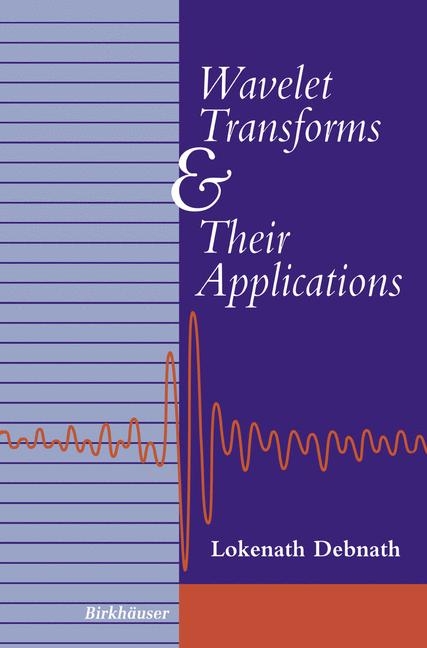
Wavelet Transforms and Their Applications
Seiten
2012
|
Softcover reprint of the original 1st ed. 2002
Springer-Verlag New York Inc.
978-1-4612-6610-5 (ISBN)
Springer-Verlag New York Inc.
978-1-4612-6610-5 (ISBN)
- Titel erscheint in neuer Auflage
- Artikel merken
Zu diesem Artikel existiert eine Nachauflage
Overview Historically, the concept of "ondelettes" or "wavelets" originated from the study of time-frequency signal analysis, wave propagation, and sampling theory. One of the main reasons for the discovery of wavelets and wavelet transforms is that the Fourier transform analysis does not contain the local information of signals. So the Fourier transform cannot be used for analyzing signals in a joint time and frequency domain. In 1982, Jean MorIet, in collaboration with a group of French engineers, first introduced the idea of wavelets as a family of functions constructed by using translation and dilation of a single function, called the mother wavelet, for the analysis of nonstationary signals. However, this new concept can be viewed as the synthesis of various ideas originating from different disciplines including mathematics (Calder6n-Zygmund operators and Littlewood-Paley theory), physics (coherent states in quantum mechanics and the renormalization group), and engineering (quadratic mirror filters, sideband coding in signal processing, and pyramidal algorithms in image processing).
Wavelet analysis is an exciting new method for solving difficult problems in mathematics, physics, and engineering, with modern applications as diverse as wave propagation, data compression, image processing, pattern recognition, computer graphics, the detection of aircraft and submarines, and improvement in CAT scans and other medical image technology. Wavelets allow complex information such as music, speech, images, and patterns to be decomposed into elementary forms, called the fundamental building blocks, at different positions and scales and subsequently reconstructed with high precision.
Wavelet analysis is an exciting new method for solving difficult problems in mathematics, physics, and engineering, with modern applications as diverse as wave propagation, data compression, image processing, pattern recognition, computer graphics, the detection of aircraft and submarines, and improvement in CAT scans and other medical image technology. Wavelets allow complex information such as music, speech, images, and patterns to be decomposed into elementary forms, called the fundamental building blocks, at different positions and scales and subsequently reconstructed with high precision.
Preface Brief Historical Introduction Hilbert Spaces and Orthonormal Systems Fourier Transforms and Their Applications The Gabor Transform and Time-Frequency Signal Analysis The Wigner-Ville Distribution and Time-Frequency Signal Analysis Wavelet Transforms and Basic Properties Multiresolution Analysis and Construction of Wavelets Newland's Harmonic Wavelets Wavelet Transform Analysis of Turbulence Answers and Hints for Selected Exercises Bibliography Index
| Zusatzinfo | biography |
|---|---|
| Verlagsort | New York |
| Sprache | englisch |
| Maße | 156 x 234 mm |
| Gewicht | 884 g |
| Themenwelt | Mathematik / Informatik ► Mathematik ► Algebra |
| Mathematik / Informatik ► Mathematik ► Analysis | |
| Mathematik / Informatik ► Mathematik ► Angewandte Mathematik | |
| Technik ► Elektrotechnik / Energietechnik | |
| ISBN-10 | 1-4612-6610-6 / 1461266106 |
| ISBN-13 | 978-1-4612-6610-5 / 9781461266105 |
| Zustand | Neuware |
| Haben Sie eine Frage zum Produkt? |
Mehr entdecken
aus dem Bereich
aus dem Bereich
Buch | Softcover (2022)
Springer Spektrum (Verlag)
CHF 55,95



